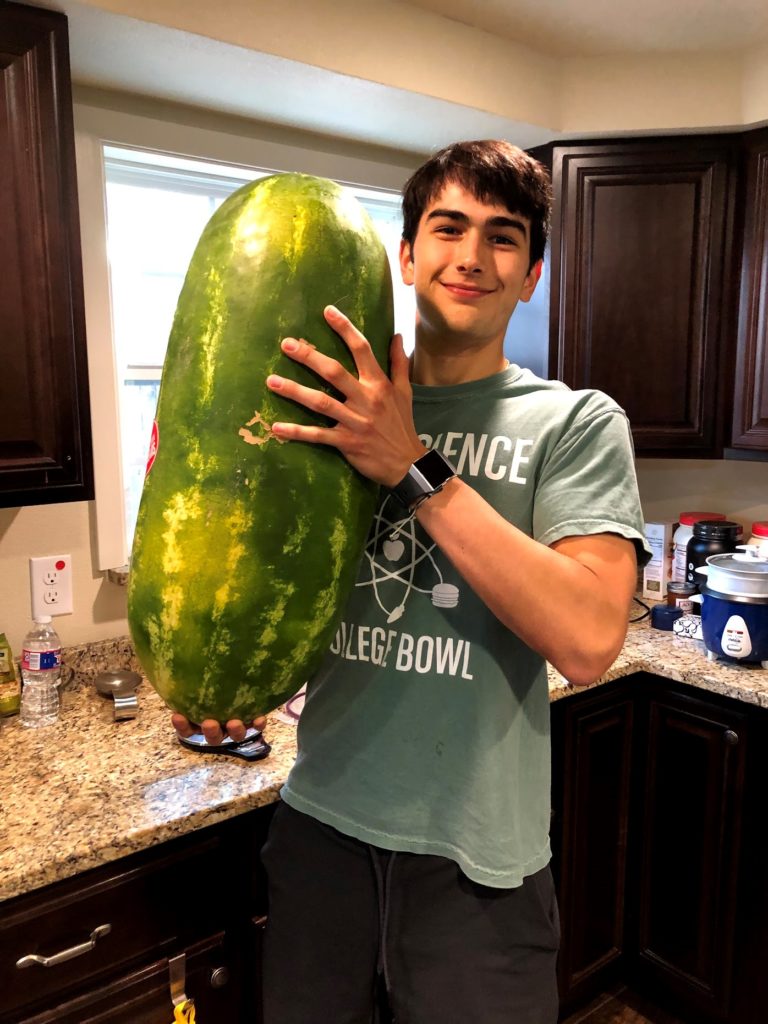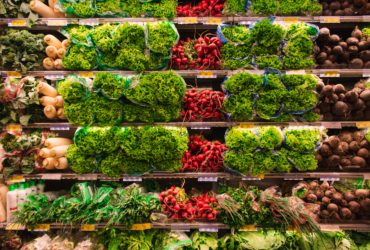By Jacob Webster-Jones
People follow different dietary patterns for many reasons such as environment, culture, availability, and marketing. However, there is a growing body of literature that links genetics to how we perceive different tastes and sensations. The implications for this relationship expand beyond just preferences since what we eat directly impacts our health. These are some of the takeaways from a recent systematic review published in the Annual Review of Food Science and Technology talking about an increasingly relevant topic as personalized nutrition becomes more popular.
How Do We Taste Foods?
At a young age we all learned the basic tastes: sweet, sour, salty, bitter, and umami. There used to be a theory showing that different special regions of the tongue correspond to one of these basic tastes. This is a common misconception and can easily be disproven by taking some honey and placing it in different areas of your tongue; you’ll taste sweetness no matter where the honey is located. Taste isn’t governed by where something is located on our tongue but rather what receptors it is able to bind to. We all have the same general kinds of taste receptors (why we can taste the same basic tastes) but how we perceive them can be vastly different depending on changes as small as one nucleotide. These genetic differences don’t change the actual taste, just our sensitivity (how much you need to consume to notice it) and intensity (once you taste it, how strong the taste is).
Bitter
The first association between taste perception and genetics was discovered in the year 1932 by Blackeslee2 in Washington University. They found that people fell into two main groups: PAV (tasters) and AVI (non-tasters). The terms “non-taster” and “taster” are a little misleading because we all taste bitterness; a more accurate description would be “more sensitive” and “less sensitive.” Bitterness perception is governed by the TARS2R gene family and has the most known encoding genes (25). This gives humans the ability to detect bitterness from a wide range of compounds. This entire time I’ve been talking about bitterness like it’s just one taste but really there are different bitterness profiles caused by different compounds. This is because different compounds activate different quantities of receptors, this also plays into the large number of bittering compounds that humans can detect. Genetic differences are responsible for perceptions in brassica vegetables (e.g. cabbage), alcohol consumption, and some non-nutritive sweeteners; if you are a non-taster, you’re more likely to have higher consumption of those foods because they wont taste as bitter to you as someone with the tasting genes.
Sweet
Sugars, non-nutritive sweeteners, amino acids, and proteins can all bind to three genes in the TAS1R gene family responsible for sweetness perception. Two of these genes are also involved in detection and perception of umami while one is used exclusively for sweetness. Much like bitterness, the way a compound binds to the active sites of these receptors give it subqualities unique to that compound along with sweetness. There have been efforts to link these genetic differences to health, about 16% of differences could be explained using genetics however there is currently conflicting literature about what the genetic variant is. People with a “sweet tooth” likely have a higher threshold for detection of sweetness and require more sweet foods to perceive the same level of sweetness as someone without that variant.
Umami
Umami perception uses two non-covalently bonded receptor proteins which are also used for sweetness perception, however in this case, they are used to detect glutamate, 5’ ribonucleotides, and the amino acid L-aspartate. These tastes are described as “savory” and “meaty”, but the characterizing compounds can be found in plants as well as animal sources. Some of these compounds are created during the cooking process. In potatoes the boiling process creates several 5’ ribonucleotides that help give them their characteristic flavor3. There have been genetic variations in the genes responsible for the taste receptors that have been shown to be associated with preference for high-protein and savory foods as well as higher fat intake. The latter is most likely not because of genetic differences but because of the nature of some high-protein foods (like a fatty cut of meat).
Sour & Salty
Unlike the previously mentioned tastes, these two to receive activating compounds. Salt ion channels are specific to the cationic portion (positively charged) of the compound while acid ion channels are sensitive to the hydrogen ions that dissociate from acids. Perception of salt has been linked to three genetic variants coding for different channels that impact a person’s sensitivity and intensity perceptions of salts and a link between less sensitive and higher intake on a clinically significant level has been made. This just means that the differences in salt perception between genetic groups causes a large enough difference in salt intake which affects health in large populations. There have been no studies showing genetic variation affecting sour perception, but this might just be due to the lack of studies currently available on the subject.
Taste Sensations (Chemesthesis)
Foods not only contribute flavor (taste + aroma) but there are some compounds within them that cause sensations. The burning feeling biting into a hot pepper, the cooling affect of menthol, and pungent compounds that make you pucker up if you try raw ginger or raw garlic (gingerol and allicin content respectively) all come from three genes that govern how you perceive them. We all know someone with a difference spice tolerance than us so without having to dig into the research we can have a safe guess that there is some genetic variation governing this difference. There are actually three variations of the gene that codes for the warming sensation so next time your friend or family member makes fun of you for not being able to handle as much spice as them you can just blame it on your genetics. The only genetic research out there involving genetic investigation and these taste sensations involves the warming gene so we can’t make any definitive conclusions about the other sensations just quite yet.
| Taste/Sensation | Activating compounds | Examples |
| Sweet | Sugars, non-nutritive sweeteners, amino acids, proteins. | Sucrose, aspartame, glycine4. |
| Umami | Glutamate, L-aspartate, 5’ ribonucleotides. | Tomatoes, avocados5, oysters. |
| Salty | Any salt compounds (the cation portion). | Table salt (NaCl), potassium chloride (KCl). |
| Sour | Food acids (acetic, citric, malic, etc.) | Vinegar, lemons, apples. |
| Warming | Capsicum, piperine, ethanol, temperatures above 43°C, low pH. | Jalapeños, black pepper, alcohol. |
| Cooling | Menthol, linalool, temperatures below 30°C. | Peppermint, basil. |
| Pungent | Allicin, gingerol, allyl isothiocyanate. | Garlic, ginger, wasabi. |
Table 1. Activating compounds and food examples of different tastes and sensations. Created by Jacob Webster-Jones.
References
- Nolden, A.A. and E.L. Feeney, Genetic Differences in Taste Receptors: Implications for the Food Industry. Annual Review of Food Science and Technology, 2020. 11(1): p. 183-204, https://doi.org/10.1146/annurev-food-032519-051653
- Blakeslee, Albert F, Genetics of Sensory Thresholds: Taste for Phenyl Thio Carbamide. Proceedings of the National Academy of Sciences of the United States of America, 1932. 18(1): p. 120-130, https://doi.org/10.1073/pnas.18.1.120
- Jansky, S.H. Potato Flavor. Am. J. Pot Res 87, 209–217 (2010). https://doi.org/10.1007/s12230-010-9127-6
- Alexander A Bachmanov, Natalia P Bosak, John I Glendinning, Masashi Inoue, Xia Li, Satoshi Manita, Stuart A McCaughey, Yuko Murata, Danielle R Reed, Michael G Tordoff, Gary K Beauchamp, Genetics of Amino Acid Taste and Appetite, Advances in Nutrition, Volume 7, Issue 4, July 2016, Pages 806S–822S,
- Salunkhe DK, Kadam S (18 August 1995). Handbook of Fruit Science and Technology: Production, Composition, Storage, and Procsessing. CRC Press. p. 368. ISBN 978-0-8247-9643-3.
 Jacob Webster-Jones | Linkedin
Jacob Webster-Jones | Linkedin
SMF Blog Writer
Jacob found his passion for food science while on an elementary school field trip to a R&D lab in San Antonio, Texas. Since then he has been interested in why food behaves the way it does and how it can be used to improve people’s quality of life. He is currently pursuing his bachelor’s degree in Food Science & Technology from Texas A&M University and is the current president of his school’s food science club and IFTSA chapter. After he graduates, Jacob plans on going to work for a few years before returning to start a graduate degree, his ultimate goal is to work in research and development for a flavor company. On the off chance he has free time you can find him experimenting in the kitchen or enjoying the outdoors.






genetics do affect how you taste like if you were born and a disease happened to your tongue and it cant be removed or helped then it could affect taste.
genetics do affect how you taste like if you were born and a disease happened to your tongue and it cant be removed or helped then it could affect it